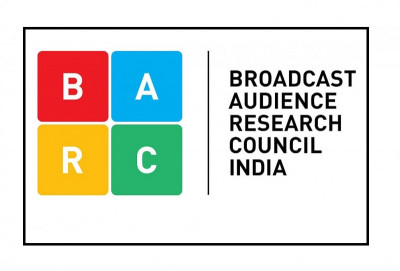BARC will maintain its strong market position over the medium term: CRISIL
Broadcast Audience Research Council (BARC) reported revenues of Rs 317 crore in FY 2020, an increase from Rs 294 crore in FY 2019. This has resulted in an improvement in the TV ratings industry body’s net loss position – from Rs 17 crore in FY 2019 to Rs 5 crore in FY 2020.
CRISIL has reaffirmed its ‘CRISIL A/Stable’ rating on the long-term bank facilities of Broadcast Audience Research Council (BARC). The rating continues to reflect the healthy business risk profile of BARC as the sole TV (television) viewership estimation agency in India, and its established business model with high revenue visibility and customer retention. The rating also factors in the entity’s strategic importance to member entities, which have extended corporate guarantees for its debt. These strengths are partially offset by modest financial risk profile.
CRISIL believes BARC will maintain its strong market position over the medium term, but any guideline by the MIB which impacts the status of BARC as the sole provider of TV viewership measurement in India will be a key rating sensitivity factor.
Also read: BARC Wk 44: Sony SAB claims No. 3 on pay platforms
CRISIL in its analysis states that broadcasters contribute more than 80% to BARC’s revenue. As per the contract, BARC has flexibility to modify the fee charged from broadcasters, which helps control volatility in cash flow It levies a fixed percentage of the ad revenue of broadcasters (0.8% for fiscals 2017 to 2020). In case of higher capital expenditure (capex) or operational expenditure in any particular year, the fee can be increased appropriately. Broadcasters are billed in advance, on a quarterly basis, reducing the risk of bad debt.
The entire debt of about Rs 33 crore (as on March 31, 2020) is guaranteed by member entities (such as Star India, Viacom18 India, Prasar Bharati Broadcasting Corporation of India, Zee Entertainment Enterprises Ltd, and Multiscreen Media) and promoter bodies (IBF, ISA, and AAAI). Additionally, the board comprises representatives from member entities, reinforcing the support received.
According to CRISIL, given the strategic importance of BARC as an independent provider of viewership numbers, support from the member entities should continue.
Modest financial risk profile
BARC follows a business model, where it fixes fees based on expenditure. It uses excess cash flow for capex, or reduces the usage fees. This arrangement results in leaner profitability and moderate cushion in cash flow.
Interest coverage and net cash accrual to total debt ratio are expected over 5 times and at 0.5-0.7 time, respectively, over the medium term. While the cushion is moderate, steady business model with flexibility to change the usage fees should ensure that debt obligation is met comfortably.
Liquidity Adequate
Liquidity is adequate, driven by estimated cash accrual of more than Rs 30-35 crore per fiscal in the medium term and cash and equivalent of over Rs 40 crore as on March 31, 2020. BARC has access to fund based limits of Rs 25 crore, which were almost fully utilised in the 2 months through April 2020. Long-term debt obligation is around Rs 37 crore in fiscal 2021. CRISIL believes BARC will meet its debt obligation and capex requirement through internal accrual and unutilised working capital limits.
CRISIL believes BARC will maintain its credit risk profile, supported by its sole player status in the viewership estimation business, and strong support from member entities of promoter bodies.





Share
Facebook
YouTube
Tweet
Twitter
LinkedIn